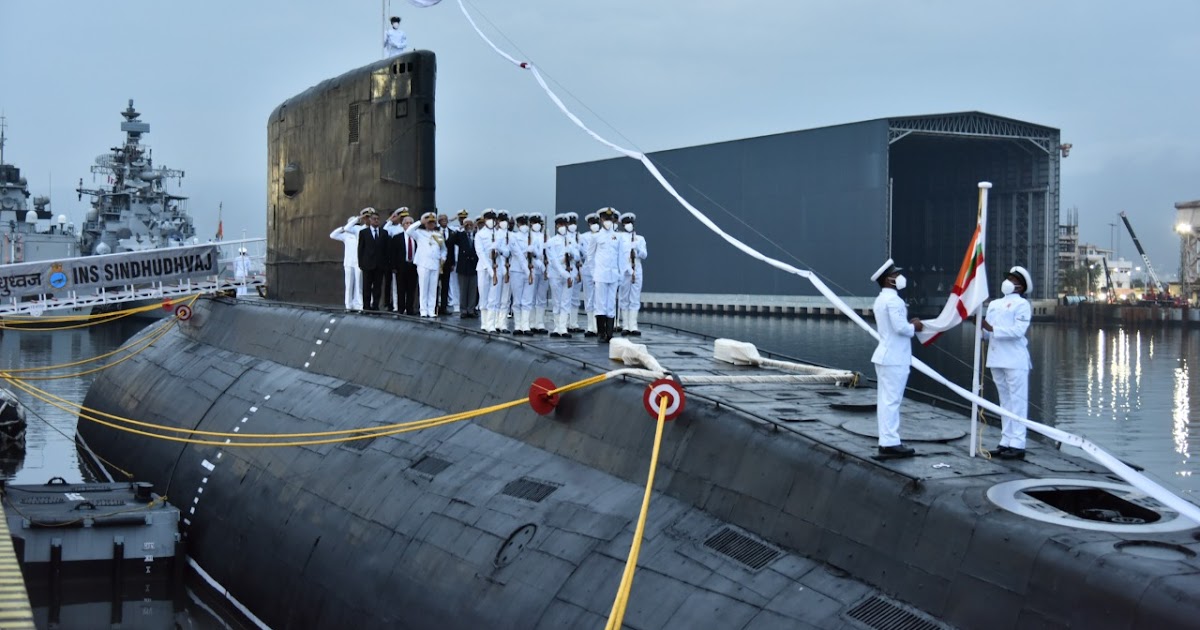
As flag carrier atmanirbharta ‘retires’ after 35 years of distinguished service, India faces submarine shortage
By Vikas Gupta
Defence News of India, 18 Jul 22
As the sun set on Saturday, with overcast skies adding to the solemnity of the occasion, Indian Navy (INS) Ship Sindhudhvaj’s decommissioning pennant was lowered and the Kilo-class submarine retired after 35 years of distinguished service.
Demonstration of the esprit de corps of the Submarine Arm, the decommissioning was attended by 15 of Sindhudhvaj’s former Commanding Officers (COs), including the Commissioning Commanding Officer – Commodore SP Singh (Retired) – and 26 commissioning crew veterans. service.
With the retirement of INS Sindhudhvaj, the 10 Kilo-class submarines that India bought from Russia between 1986 and 2000 are now down to seven conventional boats (as the navy calls the submarines ).
INS Sindhurakshak sank in Mumbai after a cataclysmic explosion in August 2013 killed all 18 sailors on board.
INS Sindhuvir was transferred to the Myanmar Navy in March 2020 as a gesture of goodwill.
Another Kilo-class submarine is to be donated to the Defense Research and Development Organization to be used as a test bed in the development of air-independent propulsion that will power 12 indigenous submarines to build in the future.
The Kilo class boats are called the Sindhughosh class, named after the lead ship in the series. They are diesel-electric submarines that displace 3,000 tons, can dive to a depth of 300 meters, have a top speed of 18 knots and can operate solo for 45 days with a crew of 53.
The Kilo class is a very reliable conventional vessel, with around 62 in service in nine navies. They were the first Indian Navy submarines capable of firing anti-ship and land-attack cruise missiles from water.
Six French Scorpene submarines, built under license by Mazagon Dock Shipbuilders in Mumbai, are gradually replacing the Kilo class boats. Called the “Kalvari class” after the lead ship, four have been inducted, while the other two are expected to join the fleet before the end of 2023.
With the Navy’s requirement for conventional submarines at 24, it is essential to expedite the planned acquisition of six additional conventional submarines under Project 75-I. Tenders are being finalized to build them in India under the “strategic partner” initiative, but it will take at least another decade to complete the procurement and construction. Until then, the Indian Navy faces a dangerous capability deficit in the submarine domain.
“Sindhudhvaj, as its name suggests, was the standard bearer of indigenization and the efforts of the Indian Navy to achieve Atmanirbharta in the Russian-built Sindhughosh-class submarine,” the navy said.
“She had many firsts to her credit, including the operationalization of the Indigenized USHUS sonar, the Indigenized, Rukmani and MSS satellite communications systems, an inertial navigation system and an Indigenized torpedo fire control system,” a- he declared.
The Sindhudhvaj successfully undertook the boat’s coupling with the Deep Submerged Rescue Vessel (DSRV) and was the only submarine to be awarded an innovation trophy by Prime Minister Narendra Modi.
In addition to the remaining seven Kilo-class boats, the navy operates four Shishumar-class conventional submarines, which are of German design.
The navy has also leased an Amur-class nuclear-powered submarine from Russia, to learn the ropes of how nuclear-powered boats work.






